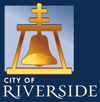
The City of Riverside launched its government transparency web page, EngageRiverside.com, in 2014 to foster digital openness, an initiative that strengthens our democracy and promotes efficiency and effectiveness in government. Government transparency improves accountability, fosters citizen engagement, and creates potential new opportunities for cooperation among agencies. Open data portals, a key feature of government transparency, allows citizens to easily access information from a web site and provide the raw data needed for outside developers to create innovative new solutions, offering the potential of “crowdsourcing” creativity to help address government challenges.
Even prior to the launch of EngageRiverside.com, the City of Riverside published an open data portal to enhance public participation and collaboration. The City will continue to expand this site to include the most frequently requested data sets. The City of Riverside welcomes suggestions for new data sets or improved government transparency.
Senate Bill 272, introduced in 2015, aims to move government to a more effective digital future. It asserts that with public sector committed to success in the digital age, the residents and businesses of California will stand to benefit from the greater collaboration and integration, improved accountability, and increased productivity that will result.
Senate Bill 272
Senate Bill 272, approved on October 11, 2015, adds a section to the California Public Records Act requiring local agencies to create a catalog of Enterprise Systems by July 1, 2016, along with annual updates.

Definition of Enterprise System
A software application or computer system that collects, stores, exchanges and analyzes information that the agency uses that is both of the following:
- A multi-departmental system or a system that contains information collected about the public.
- A system that serves as an original source of data within an agency.
Catalog Exclusions
- Information Technology security systems, including firewalls and other cybersecurity systems.
- Physical access control systems, employee identification management systems, video monitoring and other physical control systems.
- Infrastructure and mechanical control systems, including those that control or manage street lights, electrical, natural gas or water or sewer functions.
- Systems related to 911 dispatch and operation or emergency services.
- Systems that would be restricted from disclosure by Government Code Section 6254.19 (security record.)
- The specific records that the information technology system collects, stores, exchanges or analyzes.
Catalog Requirements
- Create a catalog of enterprise systems, containing:
- Current system vendor
- Current system product
- System's purpose
- A description of categories or types of data
- The department that is the prime custodian of the data
- The frequency that system data is collected
- The frequency that system data is updated
- Make the catalog publicly available upon request
- Post the catalog in a prominent location on the agency’s website
- Update the catalog on a yearly basis (at a minimum)

